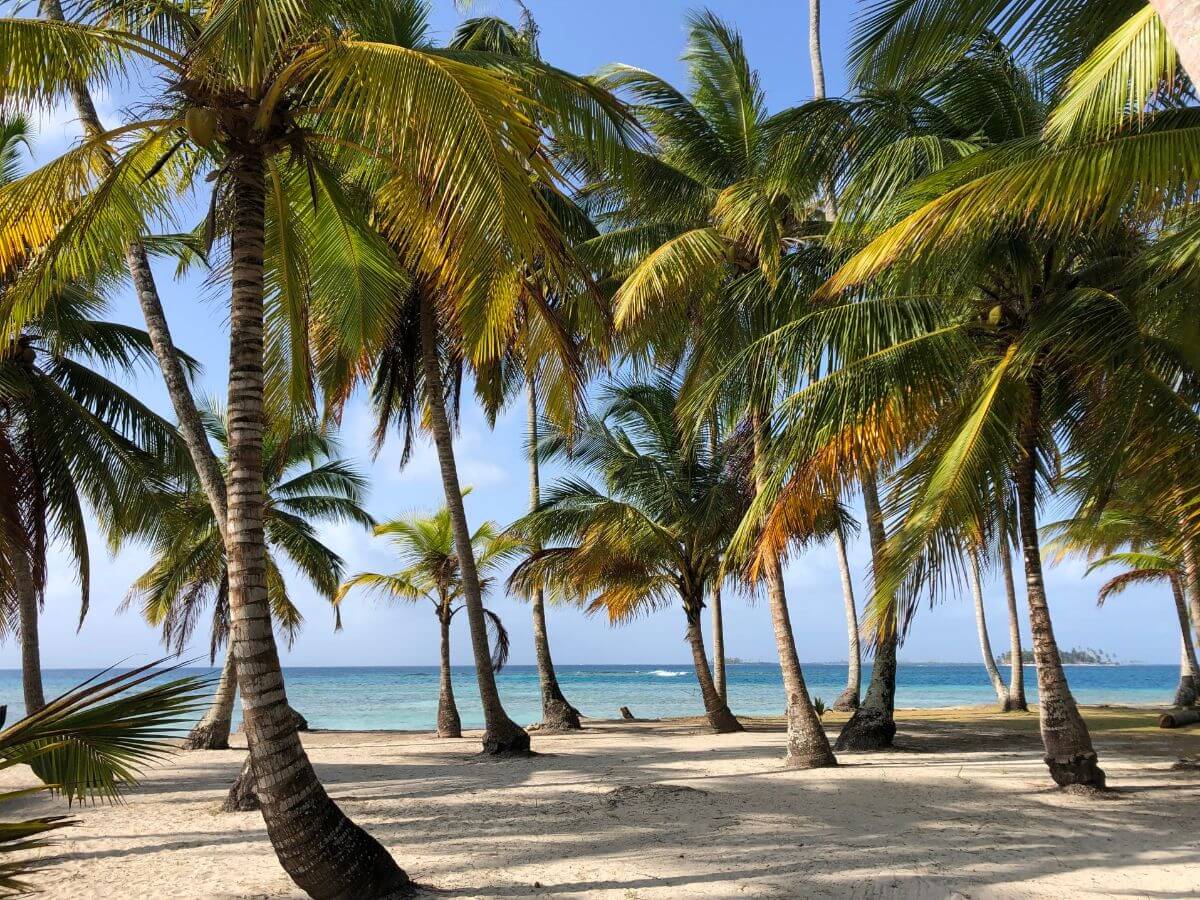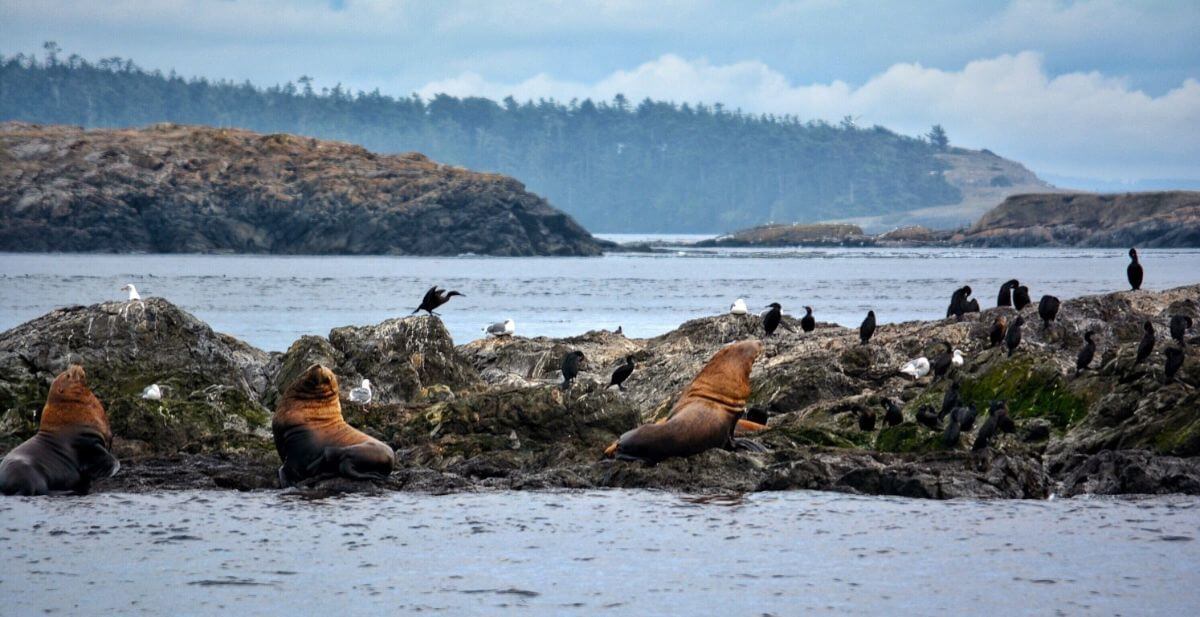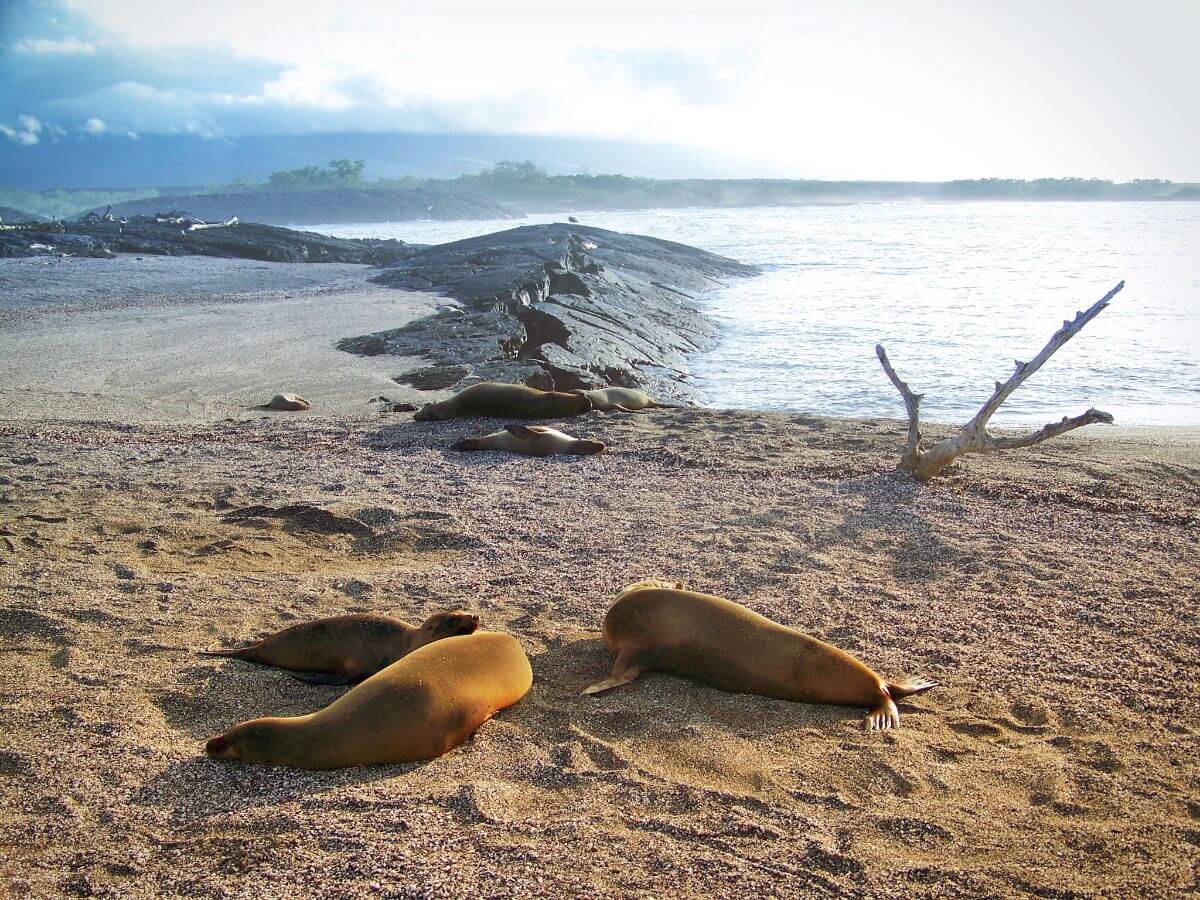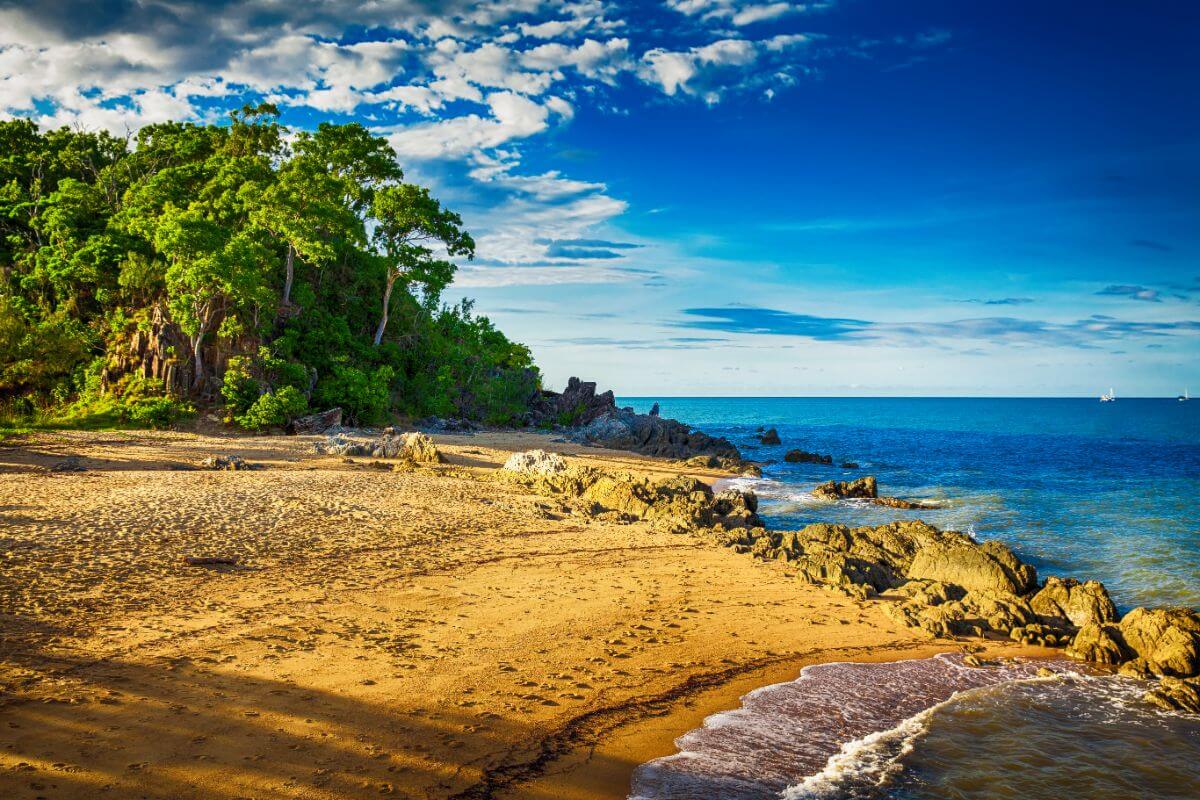How Long Does it Take to Sail Across the Pacific?
If you time it right and miss the cyclone season, sailing across the Pacific can amount to some incredible cruising experiences. The world’s largest ocean contains endless amounts of natural beauty, unique wildlife and sites of cultural interest. But how long does it take to sail all the way across?
How long does it take to sail across the Pacific? With favorable winds, the journey can take approximately 5 - 10 weeks. The distance from Panama to Australia is 8000 nautical miles but the time it takes to sail this distance depends on the winds, the size of the vessel and stopping times.
That being said, there is (unsurprisingly) more than one way to sail across the Pacific. The route you choose will determine how long the journey takes and the time of year will also have a big part to play, not to mention any decision to stay a while and explore the islands along the way. Read on for more details on what you should factor into your timings and some essential preparations to take care of before you leave.

What Route Can I Take to Sail Across the Pacific?
To answer that question, first you need to choose a launching point. When sailing across the Pacific, the two main points of departure are:
- Panama Canal for European and U.S. East Coast sailors
- Strait of Juan de Fuca for U.S. West Coast (Seattle)
Below we'll go over both these journeys in more detail, and what to expect for both.
Departing from the Panama Canal
For the majority of European sailors and those based on the East Coast of the US, the most obvious starting point for a Pacific passage is the Panama Canal. Whilst this is one of the most popular launching points, it’s not without its difficulties. The route through the canal is complex and you run the risk of being delayed during peak periods.

On the other hand, leaving from the Panama Canal gives you the perfect opportunity to visit the San Blas Islands and the Las Perlas Islands. Las Perlas is made up of over 220 islands and islets so there’s plenty to enjoy before you start the long journey westwards.
Departing from the Strait of Juan de Fuca
For US-based West Coast sailors, the Strait of Juan de Fuca is a common choice for starting the journey across the Pacific. Leaving from Seattle, it’s a 90-mile sail down the Strait of Juan de Fuca to the entrance of the Pacific Ocean. In an ideal world, you’d wait until the currents are on your side as otherwise, it can be slow going. Alternatively, you could sail down to Mexico and Cabo San Lucas if you’d prefer to start further south.

The Milk Run
One of the most popular routes for sailing westwards across the Pacific Is the Milk Run. The Milk Run takes you through the Galapagos Islands, the Marquesas Islands, the Tuamotu Islands and the Society Islands or French Polynesia.
The sailing distances of the Milk Run
- Galapagos to Marquesas: 3,000 nautical miles
- Marquesas to the Tuamotu Islands: 550 nautical miles
- Tuamotu Islands to Tahiti: 380 nautical miles
- Tahiti to Fiji: 1,801 nautical miles
Southern Route:
- Tahiti to New Zealand: 2,305 nautical miles
- Fiji to New Caledonia: 730 nautical miles
- New Caledonia to New Zealand: 1,289 nautical miles
Northern Route:
- Fiji to Solomon Islands: 1,150 nautical miles
- Solomon Islands to Torres Strait: 1,077 nautical miles

Going from the Galapagos to the Marquesas is by far the longest stretch of the journey, taking you across about 3,000 nautical miles of open water. Thankfully the winds are usually fairly regular and with a good current you can cut down the time it takes to complete this leg. Rather than focusing too much on the length of the journey, consider it a chance to settle into your adventure and appreciate the solitude of the sail.
After you’ve passed Tahiti, part of the Windwards group of the Society Islands, your journey opens up before you. The route you take is yours to decide. You might choose to go on the northern route, crossing through the Torres Strait, or the southern route.
It’s worth taking the time to explore the region and you’ll find you can spend months, even years, cruising there. The Cook Islands, Tonga and Fiji are just some of the many highlights, so don’t be tempted to rush back home too quickly.
When is the Best Time to Sail Across the Pacific?
Smooth sailing from February through to June
For the Pacific ocean, the cyclone season will dictate when you can attempt your crossing. If your launching point is Panama, you have a window from February through to June. Generally, the trade winds become more predictable and more consistent as you get later into the year. On the other hand, leaving earlier in the season gives you plenty of time to complete your journey without the pressure of the cyclone season bearing down on you.
You might be able to leave early
Despite the official window starting in February, you could also leave in late January, depending on what the cyclone forecasts are saying. The chances of a big storm at that time of the year is much lower than the middle of the season. It depends on how lucky you’re feeling!
Your sailing windows for the different routes
The official cyclone season in the South Pacific is November to April. If you’re planning to sail through the Torres Strait and into the Indian Ocean, you should aim to be through the Torres by late August to early September at the latest. This allows you to cross the Indian Ocean and get into the safety of South African waters before the cyclone season starts in late November.

Another option is to sail to the Australian coast and wait out the cyclone season in a safe place, maybe Port Douglas or Cairns. When the safe season begins again, you can then make the journey back up to the Torres Strait with less time pressure.
Map of the sailing seasons around the world
We've made a super convenient map that gives a complete overview of the cyclone seasons across the world. Make sure to take a look, it will help you to get a good overview easily.
How Can I Make the Journey Faster?
As with any sailing voyage, the speed of your journey will depend on the winds. The quickest route across the Pacific is the one that makes the most of the favorable winds throughout the journey. This means that simply sailing directly from point A to point B will not necessarily get you there quickest.
For instance, when you’re sailing from the Galapagos to the Marquesas Islands, the fastest route involves setting a course south-southwest down to 3 to 4 degrees south latitude. This will give you the chance to catch the southeast trade winds. If you continue west-southwest toward 6 degrees south latitude and 100 degrees west latitude, you should find that the trade winds become stronger and more stable.
What Do I Need to Prepare Before I Leave?
If you’re attempting to cross the Pacific, you’ll need to plan your journey in detail before your departure. Start with your boat and do a thorough, honest evaluation - is your vessel ready for the journey? Make sure you complete any jobs or essential maintenance you have been putting off. Your cruising time will be extended significantly if you have to wait and make repairs at one of your stops, so it’s worth spending the time on it before you leave to save you any problems in the middle of your trip.
Don't forget these essentials!
Make sure to go over our extensive checklist of 41 Cruising Essentials, to ensure you don't forget the most important gear and tools.
You’ll also need a passport that’s in date and you’ll potentially need visas for every stopping point. If you need to apply for any visas in advance, it’s much better to find out now than risk being turned away at the port. If you have a multi-national crew, you’ll also need to check the individual visa requirements for every nationality at every stopping point. Check and then check again.
If you’re planning to hire a car at any stage of your journey, make sure you have an international driving license too. Organize the insurance for your boat. Any drugs you’ll be taking with you should all have prescriptions from a qualified doctor. Some countries, including Australia and New Zealand, have really strict customs regulations so if you aim to be over-cautious, you’ll avoid any problems.
Take provisions with you on board as you’ll have very limited access to shops once your journey is underway. Don’t expect to find supermarkets at your stopping points! Bear in mind, however, that any fresh food you have with you when you reach the Galapagos Islands will be removed to protect the delicate ecosystem. You might be forced to have your hull cleaned too.
What About Navigational Preparations?
Before you attempt your crossing, you should also aim to spend time studying the prevailing winds, currents and cyclone season for your course. This step means you’ll be more familiar with the challenges you’re likely to face once you’re out in the open ocean. Check the position of the intertropical convergence zone and the South Pacific conversion zone too, as well as whether you will be sailing in an El Niño or La Niña year.
Approaches to the islands and stopping places on your journey also need to be planned, especially as you’re likely to be fatigued when it comes to navigating the real thing. To take an example, the Tuamotus - once known as the ‘dangerous archipelago’ - involves navigating badly charted reefs, unpredictable currents and low-lying islands to come into the majority of ports. You will need to be on guard when navigating this region, even with navigational equipment, so it’s worth knowing roughly what you’re up against.
It’s also a good idea to read up on other sailors’ experiences of the route you’re planning to take. Enough people have made the journey so you can find a lot of information written on the subject. You really can’t beat real world experience for a Pacific passage.
Learn basic marine navigation quickly
- William has written a great step-by-step guide on how to plot a course on a nautical chart
- Shawn has written a guide on Boat Compass Fundamentals for beginners, explaining the basics in depth
Are You Ready to Sail Across the Pacific?
The time it takes to sail across the Pacific does not cover the full extent of the experience. Crossing the world’s largest ocean can be a life-changing challenge. Any attempt to cross the Pacific needs stringent planning and preparations, but in the end, it’s totally worth it.
Did you find the answer to your specific question?
👍 19 👎 2
Leave a comment